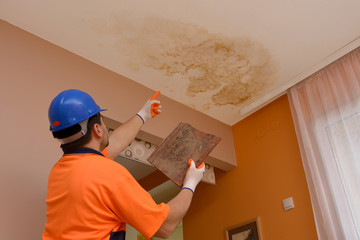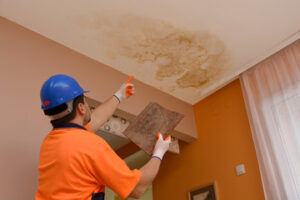Raccoons are often trapped and relocated before they can breed. This saves you starving baby raccoons crying in your attic and helps prevent future infestations.
It is important to inspect your home for entry points from a raccoon’s perspective, such as pliable spots where different building materials join or loose fascia boards. Also, make sure that outside garbage cans are tucked away and bird feeders properly covered. Contact Raccoon Removal Texas now!

Raccoons are cute masked bandits, but they can cause serious damage to homes and yards. They can eat and destroy plants, cause expensive roof repairs by climbing into chimneys and attic vents and damaging roofing materials, and even pose a health hazard when they seek shelter inside a home.
There are a number of humane approaches to removing raccoons from a property and keeping them away for good. These techniques go far beyond simply applying deterrents or setting traps, and include a full inspection of the property and identification of potential entry points.
An authorized wildlife technician can inspect the property to find where raccoons are entering the home and make recommendations for how to exclude them. This may involve a combination of techniques including installing one-way doors into vents and chimneys, sealing attic entry points with heavy gauge wire mesh, and blocking access to areas such as porches and crawl spaces with wood or metal fencing.
The inspection may also reveal possible food sources that could be attracting the raccoons. The pest controller can remove food sources from around the house, such as ensuring the chicken coop is impenetrable and bringing dog or cat food indoors; making sure bird feeders are hung high on narrow poles, and that any on the ground are tidied up nightly; and using home remedies to create odors raccoons hate to scare them off.
Other steps to prevent raccoons from getting into the attic include:
- Sealing all entry points onto the roof.
- Waiting until nesting season is over.
- Calling an experienced animal control professional to trap and relocate any babies before they are ready to be moved.
Other steps include removing food sources from the yard, keeping trash cans sealed and secured, and encouraging neighbors to follow these practices to collectively reduce attractants for raccoons in the neighborhood.
While effective raccoon removal can save homeowners thousands in costly repair bills, there are many other ways to protect your property and keep these beautiful and ingenious creatures away. In addition to these steps, an authorized wildlife removal company can help you with a range of other nuisance animal problems.
Raccoons are one of the most intelligent, adaptable animals in the wild. They have five-fingered hands that move and act with outstanding coordination, and they can open lids on garbage containers, steal pet food, and more. This adaptation allows them to find ways into homes and sheds and makes them particularly dangerous pests. Raccoons are also able to make their way into attics and other areas, where they can cause damage to insulation, ductwork, and electrical wiring.
While repellents and other humane methods of removing wildlife may help temporarily, exclusion techniques are the only long-term solutions to keep them out. These methods involve identifying how raccoons access your property and then sealing off entry points so they cannot enter in the future. This is a complex task, and it requires a professional wildlife service company with a trained, experienced team of technicians.
During an exclusion, a technician will inspect the property and note how raccoons gain entry to the home. This step will include capping chimneys, patching holes, and screening crawl spaces and decks. It will also include assessing and sealing off other possible entry points, such as vent covers and air ducts. It is important that these barriers be done correctly to avoid allowing other wildlife, such as rats, into the home.
A technician will also inspect the area where a raccoon is residing, such as in an attic or shed. If a raccoon has babies inside, it is best to wait until the mother moves them out of the den before proceeding with an exclusion. It is extremely difficult to smoke a mother and her kits out of a chimney or attic, and the kits will often die from smoke inhalation.
The next phase of the exclusion will involve placing one-way raccoon doors in known entrances to the home. These doors will allow raccoons to leave at night to forage but will prevent them from returning. It is critical that these door be installed by a professional so the one-way doors are not blocked.
To discourage raccoons from entering your property in the first place, it is necessary to reduce their available food and shelter. This is a difficult task, and it will require ongoing efforts to lock down trash cans, clean up gardens, and other steps. This process is called habitat management, and it is an effective way to keep raccoons from entering your yard.
Raccoons can cause both health and structural damage when they move into an area that isn’t meant for them. They can destroy trash cans, eat through the side of homes, attics and roofs, urinate and defecate where they live, and cause costly messes in gardens, lawns, outdoor structures like bird feeders, and more.
These mischievous critters can leave behind bacteria-laden droppings and urine in these areas, which can pose health risks for humans and pets. Their feces can spread the roundworm, Baylisascaris procyonis, and their urine can spread leptospirosis. It is essential that these areas are cleaned up and sanitized after the raccoons have moved on, so that no one gets sick from contact or inhalation of this debris. A wildlife control company can perform this cleaning and sanitization for you.
It is also important that you take steps to prevent raccoons from returning, even after they have left your home. This may mean putting out traps for them or using an exclusion technique to keep them away from the house. You can also take measures to make it harder for them to access your food and water sources, such as putting locks on trash cans or locking up garbage bins, so that they cannot open them.
Taking a preventive approach to dealing with raccoons can save you money in the long run. It is recommended that you work with a pest control company that provides a complete service, which will include inspection, trapping, relocating, and cleanup of the area. They can also repair any damage caused by the raccoons, such as chewed electrical wires and damaged duct work.
Some pest removal companies offer a free inspection before quoting a price, so that you know exactly what to expect. You can also get a recommendation from family and friends or your local Chamber of Commerce. In addition, you should only work with a wildlife control company that is licensed and insured in your state. This will ensure that they are properly trained to handle raccoons and other wild animals safely. This is especially important because raccoons can carry rabies, which is dangerous for both people and pets.
Raccoons are clever and destructive, and can make a mess of your yard and garden or break into homes and buildings for food. If they get into your house, they can cause significant damage to drywall and ductwork. They can also carry and transmit bacteria, such as salmonella, E coli, leptospirosis, roundworm, and rabies that endanger people and pets.
Prevention is key to avoiding costly and stressful raccoon removal. The first step is removing attractants to your property and creating barriers to deter them from coming near your home. This can include locking down trash cans, putting up wire fences around vegetable gardens, hanging bird feeders from trees instead of clotheslines and using motion-detection water sprayers to scare them away from outdoor structures.
If you see a raccoon in your attic, walls or chimney, contact a wildlife control professional to handle the trapping and relocation. This is an important step as raccoons that are trapped or killed inside of houses and other buildings often have young waiting to be born. These babies can then scavenge for food and enter other areas of the structure, further damaging it.
Once the raccoon has been removed and the area has been cleaned, a wildlife removal specialist will seal and sanitize the area to prevent re-entry by other animals. Bacteria-containing raccoon droppings and urine can spread pathogens to humans, pets, and livestock that can result in serious health issues, including salmonella poisoning, E coli, hepatitis, roundworm and rabies.
A raccoon can fit through openings as small as the size of its head, so it is important to inspect and repair any possible entry points into a building. These may include capping chimneys, sealing gaps around the foundation and walls, screening crawl spaces and low decks, and repairing rotten or damaged roofs.
You can also use predator urine, such as coyote or fox urine, to deter raccoons from your property. This works by triggering their natural fear of these other predators and causing them to stay away from your home or garden. However, this method needs to be reapplied regularly to continue being effective.





 Even small leaks can cause serious damage. Water spreads quickly, soaking into walls, floors, soft furnishings, wooden doors, and window frames. It can also impact electrical systems. When water is allowed to stay too long, mold can grow and lead to health issues. If you don’t deal with water damage immediately, you may not even realize you have a problem until it’s too late. The best way to avoid mold is to have a water damage restoration company come out as quickly as possible.
Even small leaks can cause serious damage. Water spreads quickly, soaking into walls, floors, soft furnishings, wooden doors, and window frames. It can also impact electrical systems. When water is allowed to stay too long, mold can grow and lead to health issues. If you don’t deal with water damage immediately, you may not even realize you have a problem until it’s too late. The best way to avoid mold is to have a water damage restoration company come out as quickly as possible.